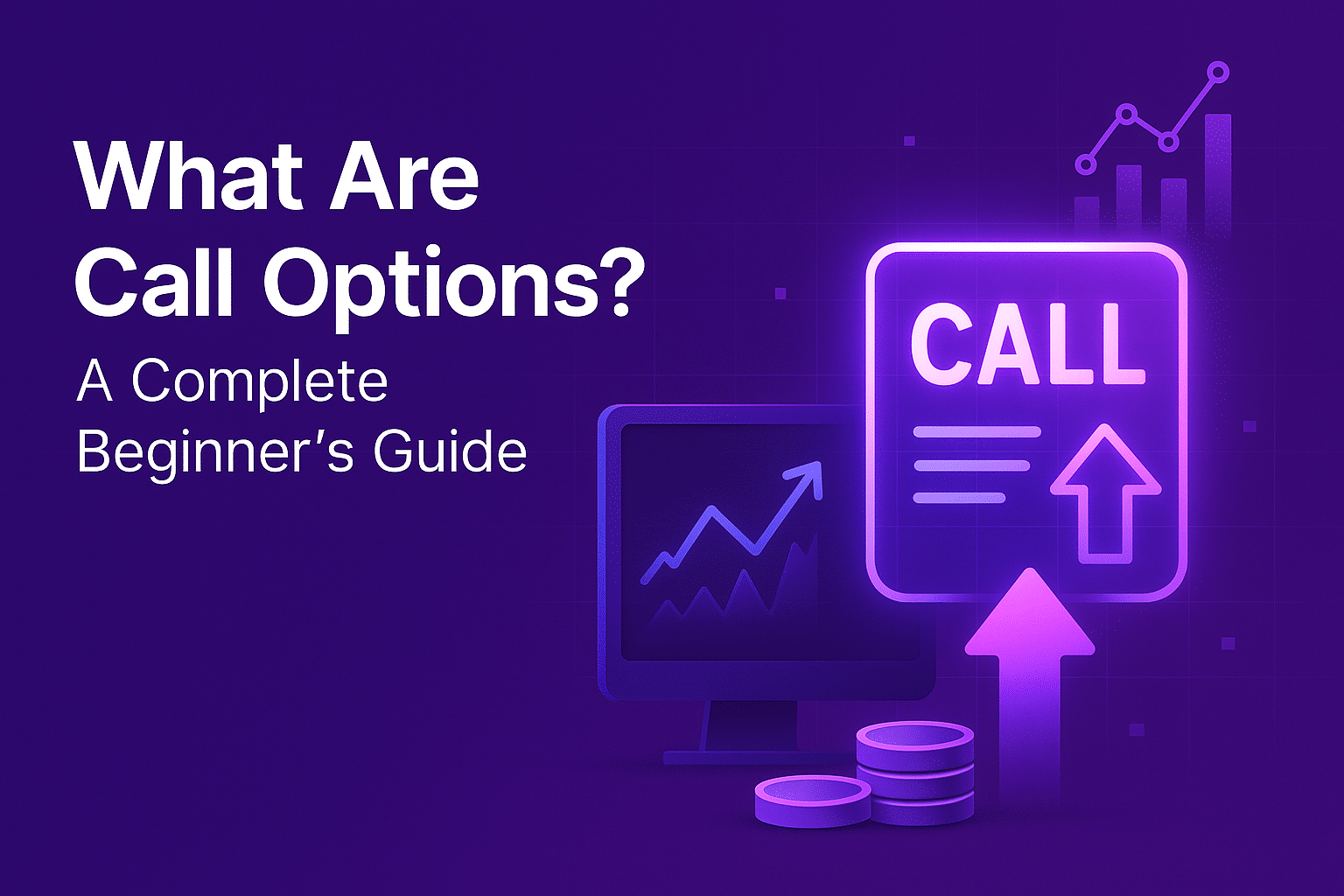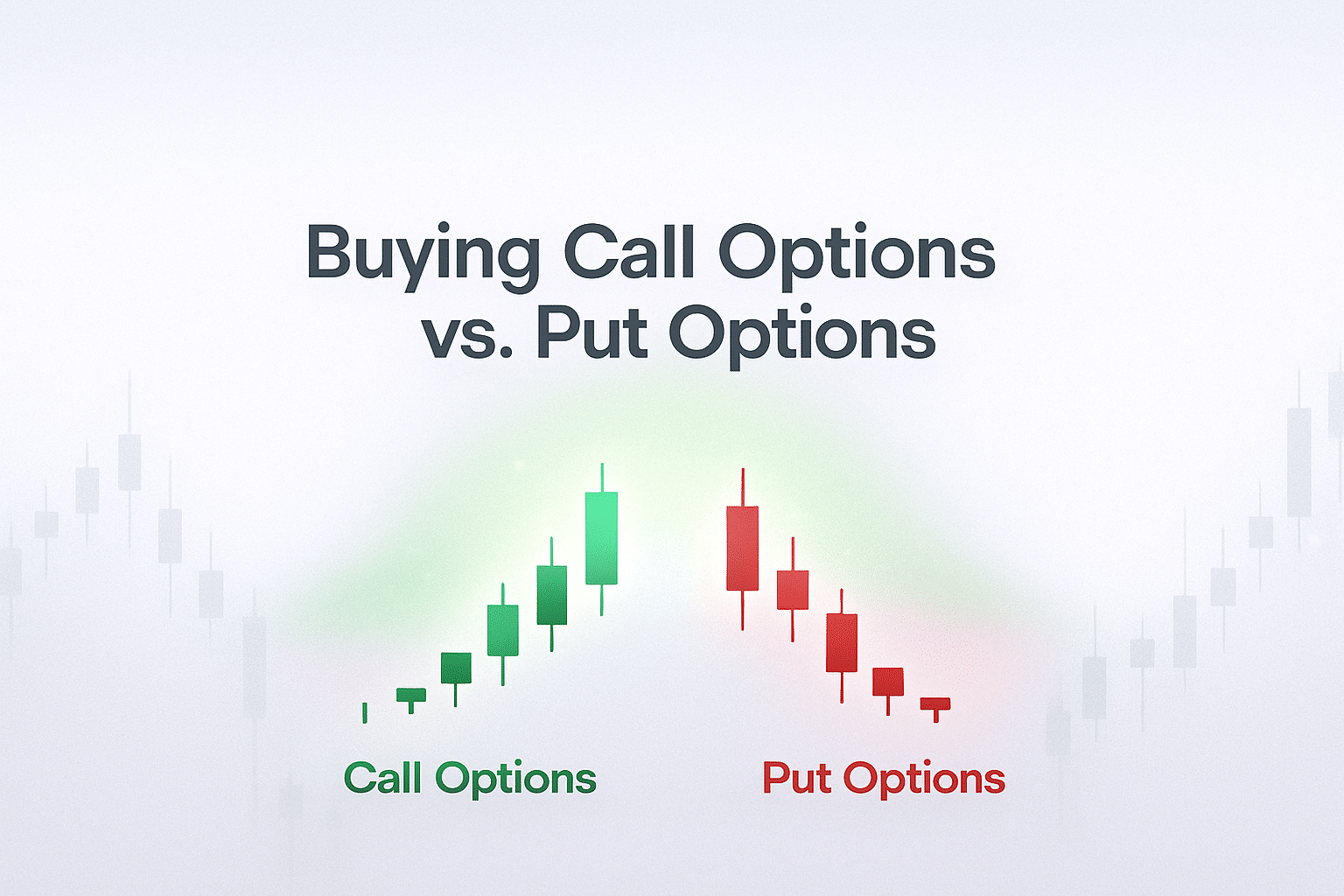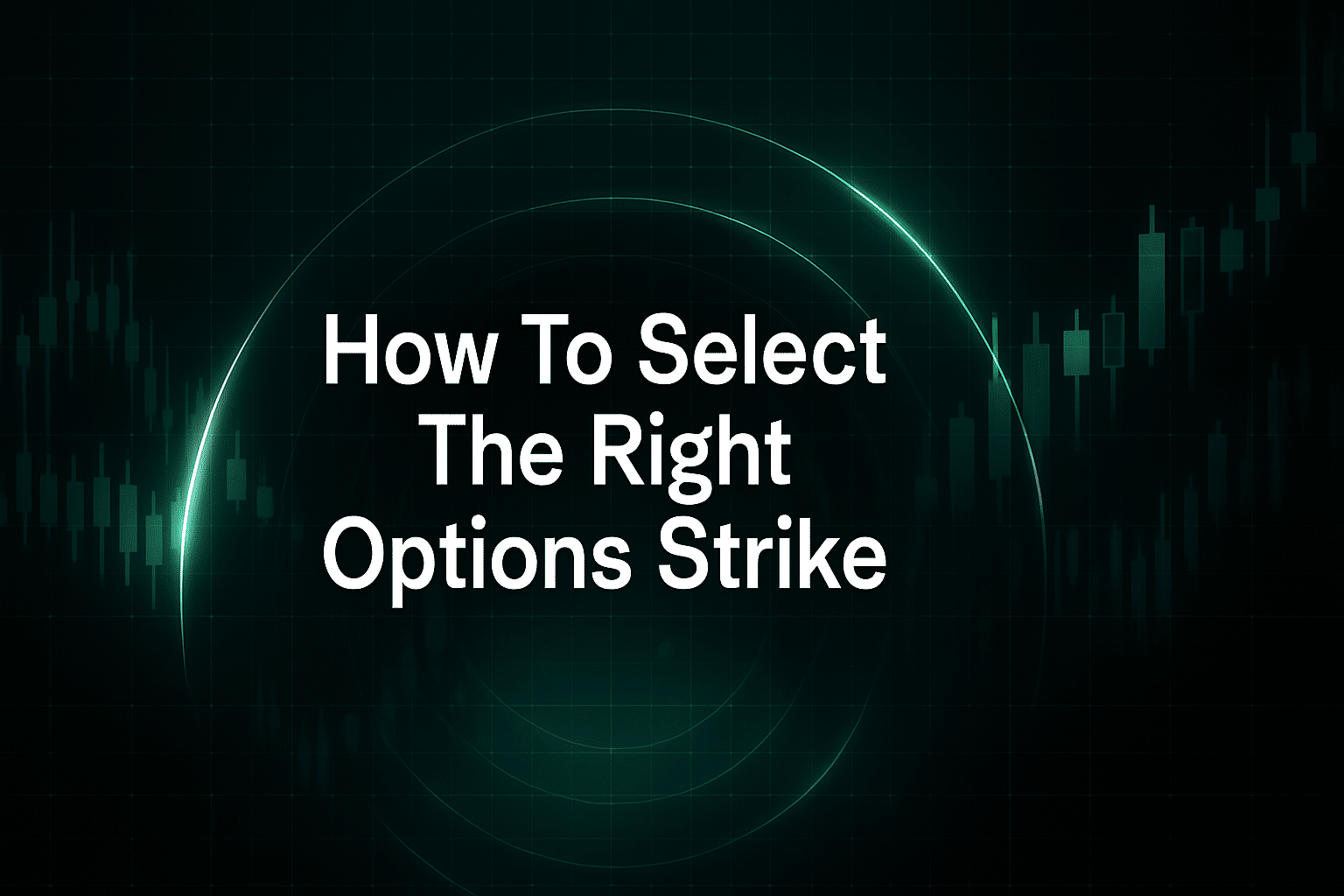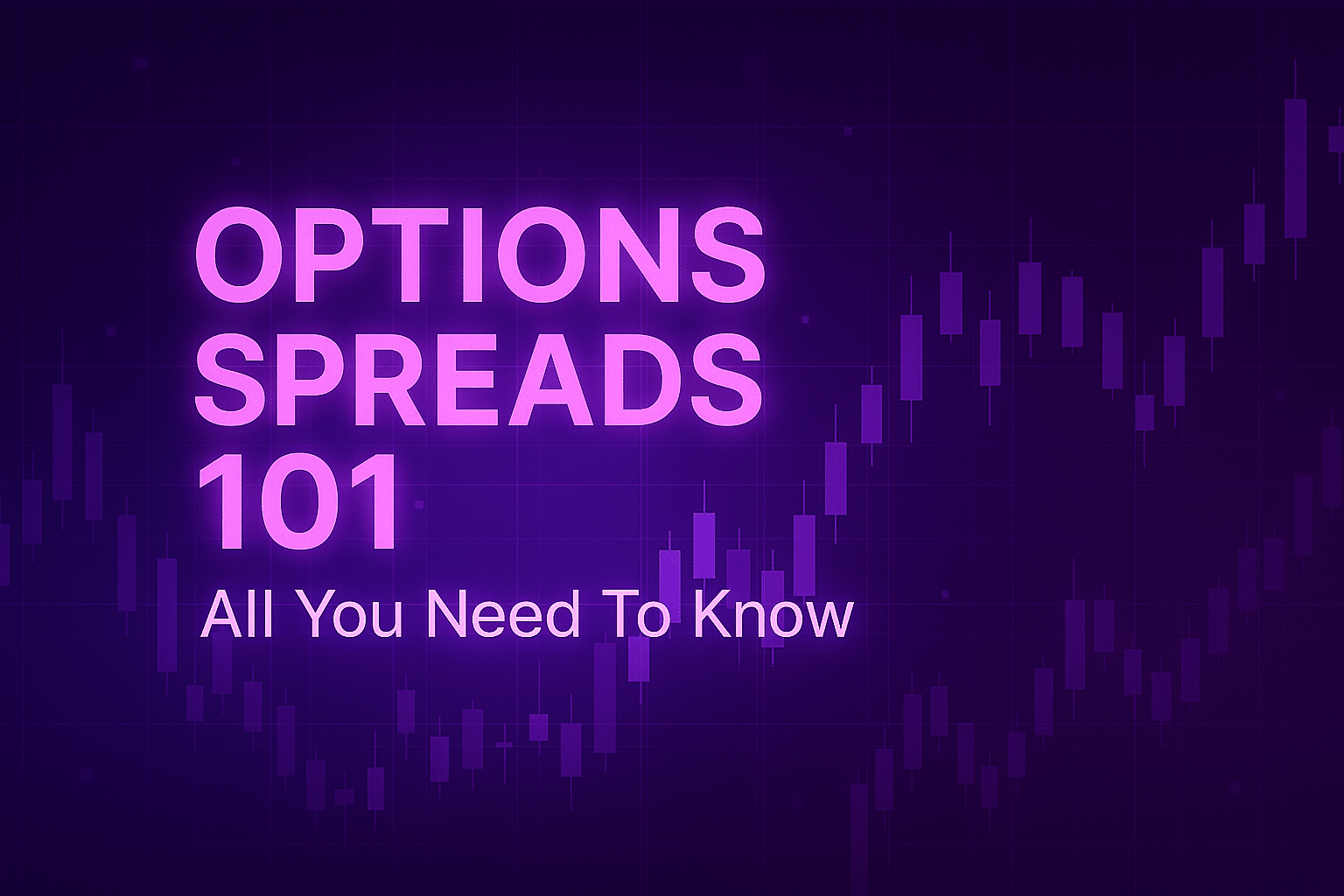What Are Call Options? A Complete Beginner’s Guide in 2025
You bought Tesla calls yesterday. Tesla jumped 4% overnight. You’re excited to check your account, expecting solid profits. Instead, your contracts are down 15%.
Sound familiar? This scenario plays out thousands of times daily because most traders understand what call options are but miss the critical forces that actually drive their prices. The difference between profitable call options trading and expensive lessons lies in understanding market structure – where dominant positioning sits and how that positioning creates opportunities.
A call option gives you the right, but not the obligation, to buy 100 shares of stock at a specific price (strike price) until a specific date (expiration). Unlike buying stock outright, call options require less capital while providing leveraged exposure to upward price movement.

Table of Contents
The Call Options Problem Most Traders Face
Here’s what happened with those Tesla calls:
You bought them when volatility was elevated and market positioning was already stretched (to the upside). When Tesla moved up 4%, the options market had already priced in a bigger move. Meanwhile, large traders started taking profits at exactly the level you expected to break out.
This isn’t bad luck – it’s predictable market structure that most retail traders can’t see (and don’t know exists).
The Traditional Approach Falls Short
Most traders pick call options by:
- Looking at basic technical levels (which is a fine start)
- Choosing strikes based on what they can afford
- Timing entries based on chart patterns alone (again, not the worst answer)
- Hoping volatility works in their favor (if they are even aware of what implied volatility is)
How GammaEdge makes Call Options Trading Actionable
Instead of guessing, you can see exactly:
- Where significant options activity (i.e., call buying) is concentrated
- Which strikes have the best structural support
- When volatility conditions favor your trade
- How market sentiment is evolving in real-time
Let’s walk through how this works, starting with the call option mechanics you need to understand.
How Call Options Actually Work In Today's Markets
Think of a call option as a leveraged bet with built-in insurance. When you buy a call, you’re paying a premium for the right to benefit from upward stock movement while limiting your downside to what you paid, as opposed to trading the underlying stock where you could experience losses as the stock goes all the way to $0 (if you hold that long).
Here’s a Real Trading Example: Using our Dashboard below, which is a visualization of AMZN’s options market structure, we can see significant upside positioning is at $250 via that strike being +GEX and COI (key upside GammaEdge levels), which will serve as our profit target. $220 is the bottom of the GammaEdge Transition Zone, which will serve as our stop loss level. Your choices for trade execution are:
Stock Purchase: Buy 100 shares for ~$23,000
- If AMZN hits $250: $2,000 profit (8.7% return)
- If AMZN drops to $170: $1,000 loss
Call Option: Buy $240 calls for $3.95 ($395 per contract)
- If AMZN hits $250: ~$800 profit (200% return)
- If AMZN stays below $240: $395 loss (maximum)
The call option gives you similar profit potential (if you buy 3 contracts so your total risk is roughly the same [i.e., $1000]) with 95% less capital at risk.
A Note About Selling Options: While this article focuses on buying call options, it’s worth noting that options can also be sold to collect premium income. Selling options involves different risks and strategies that we’ll cover in a dedicated guide. For beginners, focus on mastering the buying side first.
But Here’s What Most Services Don’t Tell You
The success of that Apple call option depends heavily on factors invisible in traditional analysis:
- Structural Position: Are you trading with the wind at your back or fighting uphill? When you’re above key transition zones, market maker hedging naturally supports upward movement while FOMO drives additional call speculation (which further increases market maker hedging).
- Speculation Momentum: Is options speculation building in your favor or fading? Tools like the GEX Ratio and Delta Balance show whether call activity is accelerating day-over-day, signaling growing institutional and retail conviction.
- Target Alignment: Does the structure show clear upside targets where call speculation is concentrated? When you see heavy call positioning at higher strikes, you’re identifying where the market collectively expects price to move – creating natural profit-taking levels that can accelerate your position.
Understanding these factors transforms call option trading from speculation into strategic positioning.
The Three Hidden Forces That Make or Break Your Call Options
Every call option’s price responds to forces most traders never see. GammaEdge’s market structure analysis reveals exactly how these work:
Force #1: Options Speculator Positioning (Who's on Your Side?)
The Problem: You can’t see where the big money is positioned in traditional price charts.
GammaEdge Solution: Our Web App Dashboard (as shown in the Amazon example above) allows you to look under the market’s hood, revealing to you exactly where significant call buying (via institutional and retail activity) is concentrated. When you see heavy positioning at specific strikes, you’re identifying where smart money expects movement.
Practical Application: Instead of buying the $275 AMZN calls in our example hoping for a big move, market structure revealed to us that the collective options speculation was positioned for a move to $250, which influenced our selection of the $240 calls.
Force #2: Market Sentiment Evolution (Is Momentum Building or Fading?)
The Problem: Sentiment can shift rapidly, turning winning positions into losers overnight.
GammaEdge Solution: The GEX Ratio tracks whether call speculation is increasing or decreasing over time. A rising ratio often precedes strong moves, giving you early warning of building momentum (and a deteriorating ratio oftentimes show us a weakening structure in advance of price declining).
Practical Application: Before buying those Amazon calls, you’d check if call sentiment is building (favorable for your trade) or if it’s been declining (suggesting your timing might be off).
Force #3: Structural Price Levels (Where Will Your Calls Accelerate?)
The Problem: Not all price levels are created equal – some act like launch pads for call options while others create resistance.
GammaEdge Solution: Our transition zone analysis identifies where call options are most likely to accelerate in value. These aren’t arbitrary technical levels – they’re mathematically derived from options positioning itself.
Practical Application: Rather than guessing where Amazon might break out, you’d know that $225 is a key transition level where dealer hedging could amplify your call option’s value if breached to the upside.
Your Step-by-Step Call Option Trading Framework
Here’s how to implement this systematic approach:
Step 1: Confirm Your Setup with Market Structure
Traditional Method: “Amazon looks bullish on the chart, I’ll buy calls.”
GammaEdge Method:
- Check the Web App Dashboard: Is call positioning concentrated above current price?
- Verify with Delta Balance and GEX Ratio: Are calls dominant in both current and future expirations? Has speculation been building or reducing?
- Confirm with Market Trend Model: Is broader momentum supportive?
Action Item: Never buy call options without confirming alignment from the options market and what’s happening under the hood. If the structure shows put dominance or mixed signals, either wait or consider a different approach.
Step 2: Optimize Your Strike Selection
Traditional Method: Pick strikes based on price or arbitrary percentages out-of-the-money.
GammaEdge Method:
- Identify where maximum call gamma sits (+GEX level)
- Check which strikes have transition zone support
- Match your conviction level to strike probability
Specific Example: If Amazon’s +GEX sits at $250 with strong call positioning, your $240 calls have structural backing versus random $275 or $300 strikes.
Step 3: Time Your Entry
Traditional Method: Enter based on chart breakouts or momentum indicators.
GammaEdge Method: While entering with a breakout is a good start, we can amplify this by:
- Confirming general market buying via the Market Trend Model (preferably occurs on a linear up day)
- Ensuring price is through the top of the transition zone
- Avoid entry during high volatility periods (like an earnings announcement) unless you expect moves larger than what’s priced in
Pro Tip: Understanding what’s “priced in” to your call options is crucial for success. Every option has implied volatility – essentially the market’s expectation of how much the stock will move during your option’s lifetime. When implied volatility is high, the option is expensive because traders expect big moves. This means you need larger stock movements just to break even. The best call option opportunities often occur when market structure is supportive but implied volatility hasn’t spiked yet – giving you favorable positioning before the crowd recognizes the setup.
Step 4: Manage Your Position
Traditional Method: Hope the stock moves in your favor and try to time the exit.
GammaEdge Method:
- Monitor structural level breaks that could accelerate your position
- Track sentiment changes that might signal profit-taking time
- Analyze market positioning to see where key monetization levels sit in the structure
Exit Triggers: Take profits when your calls reach structural resistance levels or if sentiment analysis shows weakening call speculator support.
Strike Selection: Understanding What You're Paying For
Your strike choice should match both your conviction level and what market structure tells you: But before choosing between ITM, ATM, and OTM calls, you need to understand what drives an option’s price:
- Intrinsic Value: What the option is worth if exercised immediately
- Time Value: The premium paid for the possibility of future profit (based on time to expiration)
- Implied Volatility: How much movement the market expects (as we discussed earlier)
Your strike choice determines how much of each component you’re buying and how your option will behave:
Strike Selection & Call Options FAQs
When to Use In-the-Money (ITM) Calls
- What You’re Buying: Mostly intrinsic value with some time value
- Option Behavior: Acts most like owning stock – moves roughly dollar-for-dollar with the underlying
- Best For: Higher conviction trades where you expect steady, sustained moves rather than quick pops
Trade-off: Higher cost but more predictable behavior and less time decay risk
When to Use At-the-Money (ATM) Calls
- What You’re Buying: Balanced mix of intrinsic value (if any) and time value
- Option Behavior: Moderate leverage with reasonable probability of profit
- Best For: Balanced approach when you have moderate conviction and expect meaningful moves
Trade-off: Middle ground on cost, leverage, and probability
When to Use Out-of-the-Money (OTM) Calls
- What You’re Buying: Pure time value – no intrinsic value
- Option Behavior: High convexity – can appreciate rapidly but also lose value quickly
- Best For: Speculative plays where you expect large, quick moves within your time frame
- Trade-off: Lowest cost but highest risk – need significant stock movement just to break even
The Key Insight: ITM calls are for steady grinders, OTM calls are for explosive moves, and ATM calls balance both approaches.
Advanced Application: Using GammaEdge for Call Options Mastery
Once you understand the basics of call options, GammaEdge tools unlock advanced strategies:
Pattern Recognition
Uncover how to spot when significant institutional and retail call buying is building before it shows up in price action. This early positioning often precedes the strongest moves. This is best seen through our GEX Ratio tool.
Multi-Timeframe Analysis
As options are inherently forward looking, we can use our Delta Balance to see how call positioning evolves across different expiration cycles. Strong alignment across timeframes signals higher probability setups.
Risk Management
Leverage structural levels to set logical stop losses and profit targets based on where market forces will likely create support or resistance.
Your Next Steps: Implementing This Call Options Framework
This Week’s Action Items:
- Analyze Your Current Positions: If you’re holding call options, check how they align with current market structure using our Web App Dashboard
- Practice Structure Analysis: Before your next call option trade, run through the four-step framework outlined above
- Paper Trade the Approach: Test this methodology with paper trading to build confidence before risking real capital
- Unlock the Advanced Tools: Explore our complete framework to understand how all GammaEdge tools work together for maximum edge
Free Resources to Get Started:
This way of thinking may be new for folks. That’s exactly why we created our flagship educational course called the GammaEdge FastPass, which is designed to significantly accelerate your learning curve. As with all of our education, it’s completely free to you and gives you everything a paid member of our community gets. That includes our methodologies, our strategies, frameworks, etc. We hold nothing back. You can unlock your copy of the FastPass using the link below:



